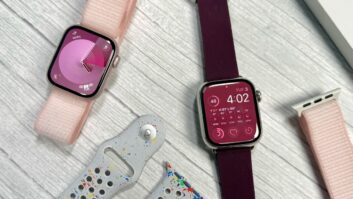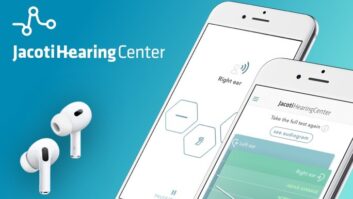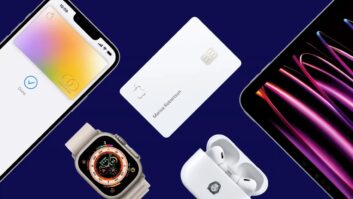New York – The 3G
iPhone 4 for Verizon Wireless is just like AT&T’s iPhone.
They’re the same
size, weight, priced the same, deliver the same amount of talktime and
web-browsing time. Also each offers almost all of the same features, with the only
exception being the addition of a mobile Wi-Fi hot spot to the Verizon iPhone.
Yet analysts see both
Apple and Verizon gaining from the launch of the world’s first CDMA version of
the iPhone 4.
For Apple, the
CDMA iPhone expands its total addressable market, offering committed Verizon
subscribers their first opportunity to use an iPhone, said iSuppli senior
analyst Tina Teng, “The arrival of a CDMA version and the addition of Verizon
as a carrier will significantly boost the available market for Apple’s iPhone.”
For Verizon, although
most of its iPhone subscribers will likely come from its existing pool of
subscribers, the carrier has the opportunity to step up its feature-phone
subscribers to a smartphone tied to costlier data plans, said Current Analysis
research director Avi Greengart.
“The majority of
Verizon subscribers still are feature-phone customers,” Greengart said. On the
Verizon network, feature phones require a $9.99/month data plan, but the only data
plan currently available for Verizon smartphones costs $29.99/month for
unlimited use.
Verizon hasn’t announced data-plan pricing for
its iPhone but could emulate the tiered data-plan strategy of AT&T, which
offers the iPhone with a $15/month 200MB data plan, a 2GB $25 plan, and a $29
unlimited-data plan.
Stephen Baker, the
NPD Group’s industry analysis VP, also believes Verizon’s initial iPhone sales
will come from its own customer base. “Most of the projections show that most
of the iPhone volume for Verizon in the short-term will be upgrades from their
own customers as people coming off contract choose the iPhone instead of a
Blackberry, Droid or Android device,” he said. This will boost Apple’s overall
iPhone sales as new people are brought into the Apple fold, he said.
Analysts don’t
expect hordes of AT&T iPhone subscribers to abandon the much-maligned
network, at least in the short term, for multiple reasons. For the most part, AT&T
has worked hard to forestall any mass defections of iPhone users from its
network, analysts point out. For example, AT&T has offered incentives to iPhone
users to upgrade to the iPhone 4 if they re-commit to a two-year contract. On
top of that, AT&T said 80 percent of its iPhone subscribers are on family
or business plans, making it more difficult to switch networks.
To maintain its
iPhone subscriber base, AT&T is also expected by analysts to heavily
promote the advantages of its network, including 3G speeds that are faster than
Verizon’s and the ability to offer simultaneous voice and data on the iPhone
and other smartphones. AT&T also pointed out that the CDMA iPhone will not
roam in nearly as many countries as its iPhone.
Although analysts
see both companies as gaining with the new deal, The NPD Group’s Ross Rubin
believes Apple is the bigger winner. “It represents a larger market expansion
opportunity for Apple, which was finding it difficult to increase share while
limited to AT&T,” said Rubin, NPD’s executive director of industry analysis
for consumer technology. “In contrast, Verizon was doing pretty well getting Android
into the hands of its power users.”
For its part, market
research company iSuppli contends the launch of a CDMA iPhone in the U.S. and
other countries will accelerate worldwide iPhone sales growth. Without the CDMA
phone, iSuppli projects iPhone shipments would grow only by 7 percent in 2011,
but thanks to the addition of the CDMA version, sales will grow 33.3 percent.
In all, Apple will
ship 12.1 million CDMA iPhones through Verizon and other CDMA carriers around
the world in 2011 out of a total of 61.2 million global unit shipments, iSuppli
projects.
To get those sales
started, Apple and Verizon plan on Feb 3 to start on-line preordering to
existing Verizon customers, with actual sales starting a week later on February
10 through Apple and Verizon stores and the Verizon and Apple online stores. “Certain
of our key distribution partners” will get the iPhone “in a matter of weeks”
after that, said Verizon Wireless Verizon Wireless president/CEO Dan Mead.
Mead also said Verizon
is prepared to handle the data traffic that the iPhone will generate. The
company has “built margin into our capacity throughout the country,” he said at
a press conference, pointing in part to the addition of fiber-optic cables to
cell sites.
Verizon and Apple,
however, didn’t go so far as to expand capacity even more by launching a 4G
iPhone equipped with Verizon’s 700MHz LTE (long-term evolution) technology.
Apple COO Tim Cook cited two reasons. First-generation LTE chipsets would have
forced “some design compromises,” he said. The second and most important reason
is that Verizon subscribers “want the iPhone now,” he said.
In other responses
to questions, Cook said the deal with Verizon is a “multi-year, non-exclusive”
deal for CDMA iPhones.
Pricing will
remain the same as under AT&T: $199 for the 16GB and $299 for the 32GB
version with a two-year contract.
At the same price,
however, the Verizon iPhone adds mobile Wi-Fi hot spot, a feature that
surprised NPD’s Rubin. The mobile hot spot is a feature that Apple “had
traditionally eschewed,” he said.
Rubin was also
surprised that the Verizon iPhone, like its AT&T counterpart, limits
Apple’s FaceTime video chatting to Wi-Fi. Enabling FaceTime chatting over
Verizon’s 3G network would have been ” a significant differentiator and been an
additional vote of confidence in its network,” he said.













